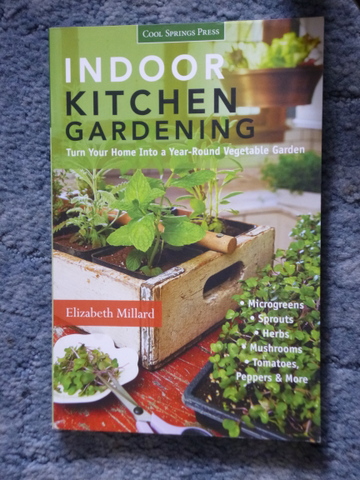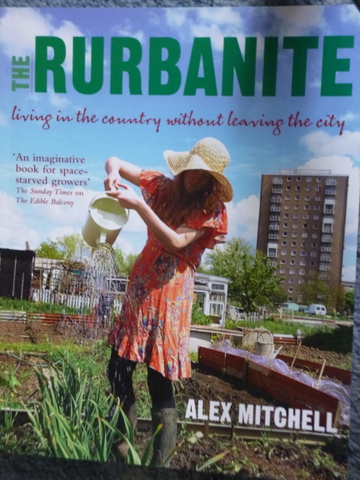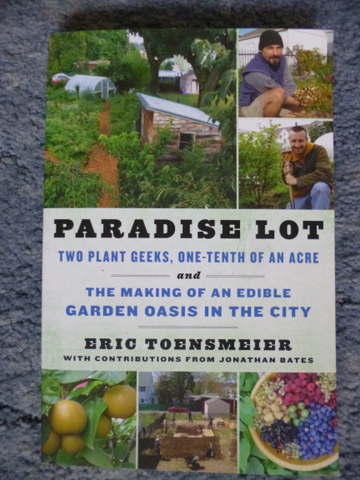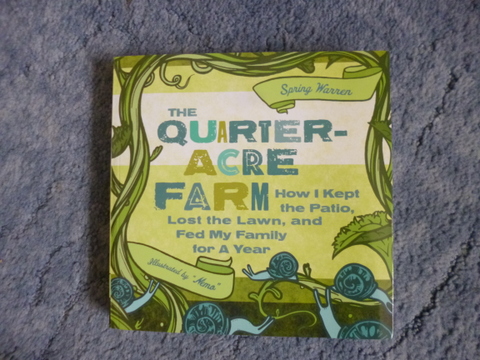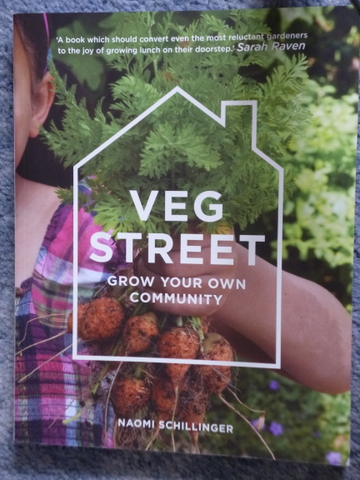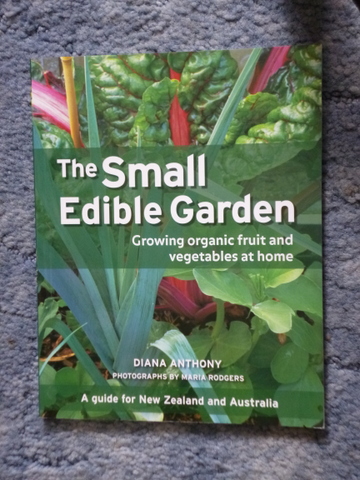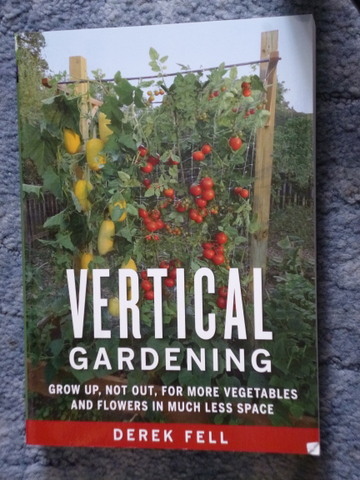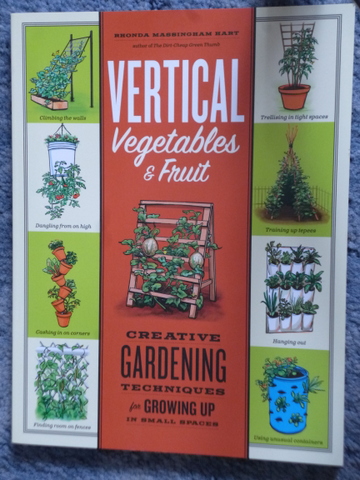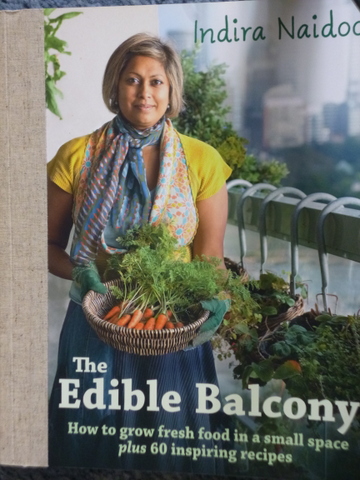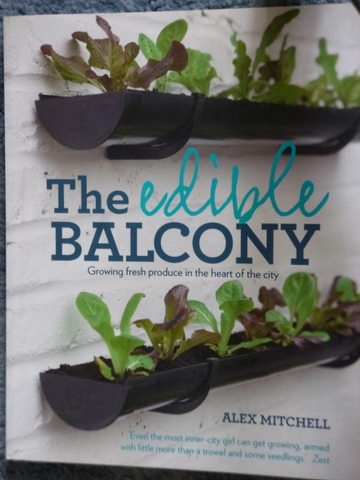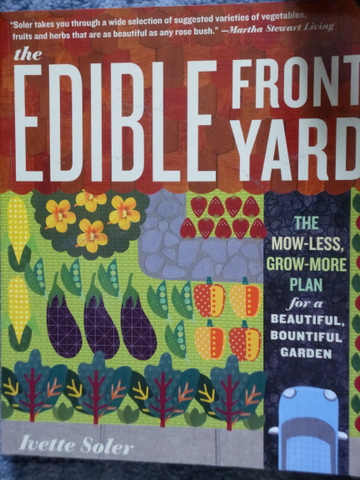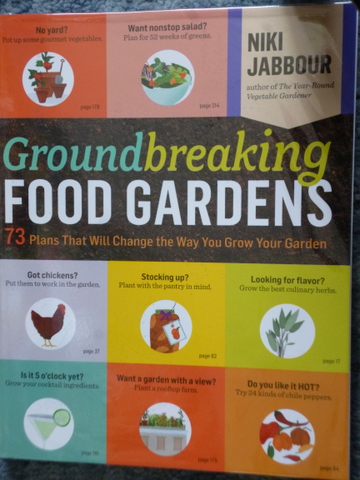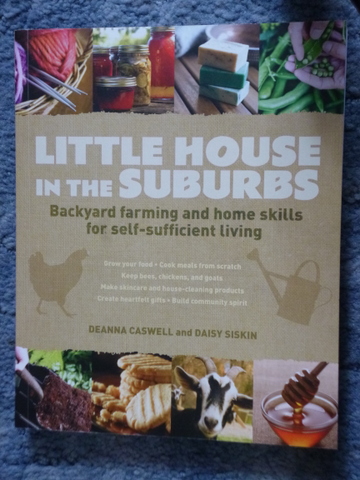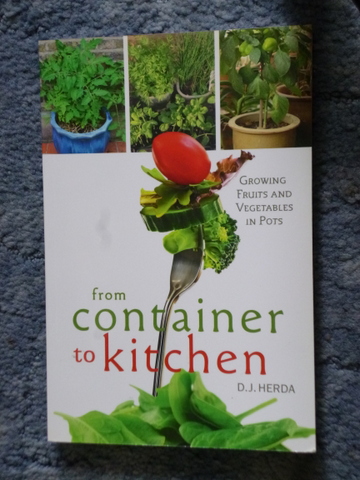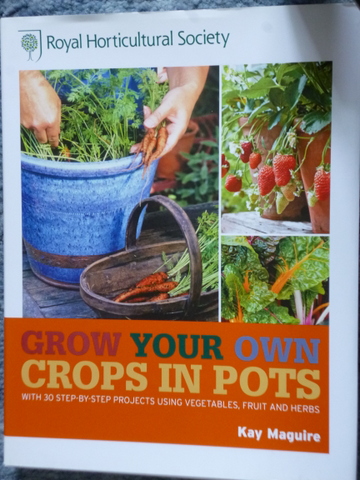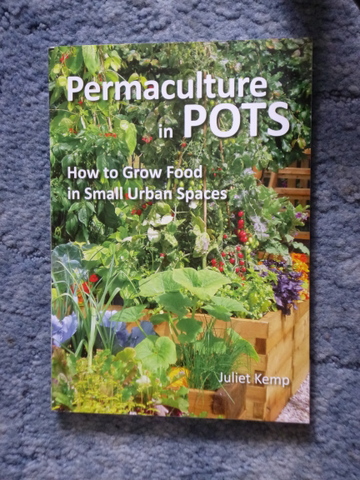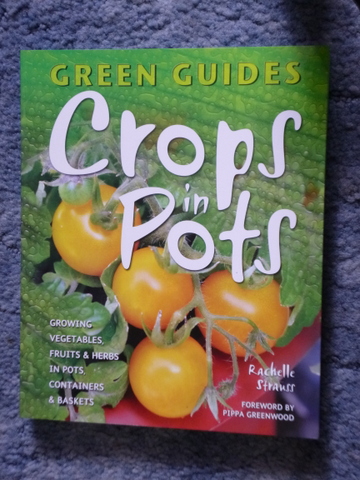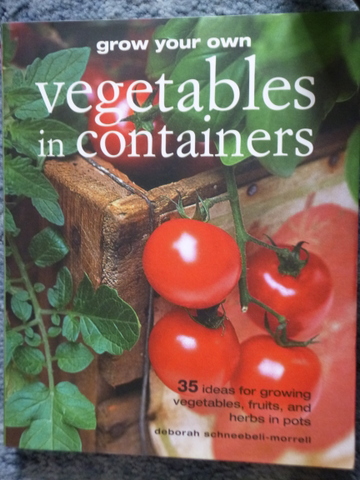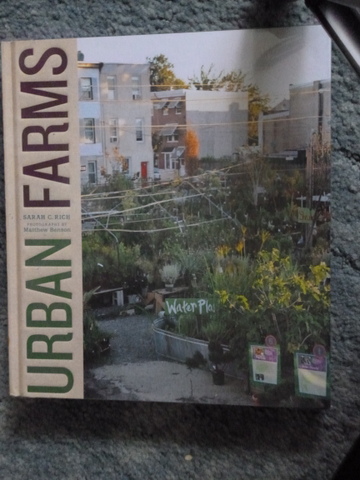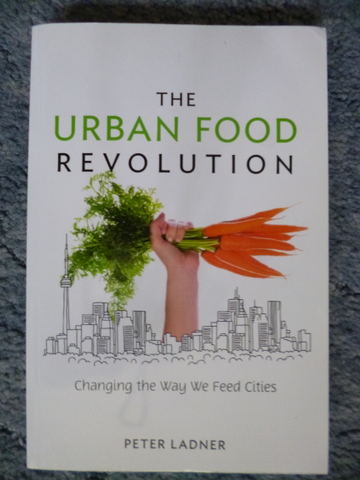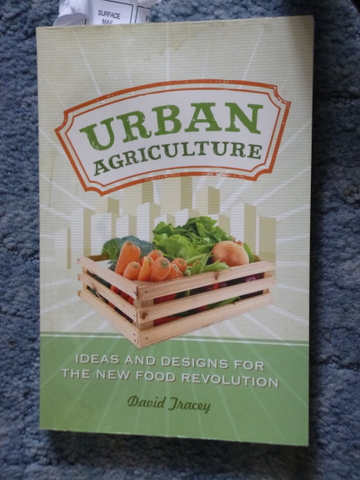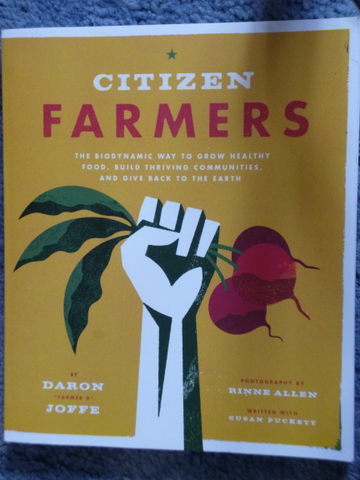Since growing stuff in the urban and suburban environment is a cornerstone of living more sustainably, it should come as no surprise that it is one of my passions. It should also come as no surprise that I am continuing to collect books on the subject. I have broken the list up into three categories: General Books; Growing food in Containers and Urban Agriculture.
General Books
Indoor Kitchen Gardening – Elizabeth Millard – Cool Springs Press (US) 2014 ISBN 978 1 59186593 3 – This small book has lots of info about indoor gardening. Rather than getting stuck into growing it covers how to find growing space, getting started with indoor growing covering subjects such as soil, containers, artificial lighting and air circulation. The general stuff continues with details on common pests and diseases then moves onto indoor crops including microgreens and sprouts, mushrooms, wheatgrass, Pea, popcorn and sunflower shoots. The final section covers more conventional indoor vegetable crops. Glossy paper and lots of colour photos.
The Rurbanite – Alex Mitchell – Kyle Books (UK) 2013 ISBN 978 0 85783 072 2 – There are lots of ideas here on how to grow food in the city, from the soil up. Container growing is covered as well as seed saving, guerrilla gardening street gardening. Wild food and wildflower foraging is covered as well as raising chooks, quail, ducks and bees in the city. Lots of colour photos.
Paradise Lot (The making of an edible garden oasis in the city) – Eric Toensmeier - Chelsea Green Publishing (US) 2013 ISBN 978 1 60358 399 2 – This is the sort of book you read from cover to cover. It is the story of two guys who bought a duplex in the US city of Holyoke and proceeded to turn their shared backyard into a permaculture based, low maintenance edible garden. A great read! No drawings, but there are a dozen or so colour photos in the centre of the book.
The Quarter Acre Farm – Spring Warren (Yup, that’s her name!) Seal Press (US) 2011 ISBN 978 1 58005 340 2 – This is another cover-to-cover read. The author wanted to grow 75% of their food on their suburban block. There is a fair bit of “this is how I did it” and recipes for your home grown produce are included. We have actually used a couple of the recipes. She also talks about preserving, animals and eating the weeds. No photos just a few line drawings.
Veg Street – Naomi Schillinger – Short Books (UK) 2013 ISBN 978 1 780 72112 5 – This one is a bit of a coffee table book, lots and lots of colour photos but not hugely information dense. It is set out with each chapter covering a month (starting with January) and each month giving information about which plants can be planted and which can be harvested that month (for the northern hemisphere of course). There is also a small section called Community Corner covering ways of revitalising your community around growing things, a page or two on potting various plants and also a “simple but Brilliant Ideas” page. Good if you want basic information.
The Small Edible Garden – Diana Anthony – David Bateman Ltd (NZ) 2008 ISBN 978 1 86953 705 0 – A very small book too! (64 pages) It gives good basic information on setting up and managing a small food garden, including containers as well. Details on soils, watering, sowing and planting are covered with information on growing fruit, veg and herbs as well as organic management principles. Lots of colour photos, good basic info.
Vertical Gardening – Derek Fell – Rodale Press (US) 2011 ISBN 978 1 60529 083 6 – The book opens with a discussion of what constitutes vertical gardening and its advantages, moving from there into choosing your site and preparing the soil. This is followed by several chapters discussing the vertical gardening options (arches, pergolas, trellises, hanging planters etc.). Composting, seed starting, pests and diseases, watering pruning and fertilising (all organic) are covered and there is a section on fruit and vegetables suitable for vertical gardening. The book has some line drawings and colour photos as well as a fair amount of balck and white photos.
Vertical Vegetables and Fruit – Rhonda M. Hart – Storey Publishing (US) 2011 ISBN 978 1 60342 998 6 – The book is divided into 3 parts, the first part covers why you should garden vertically and the sorts of techniques used such as trellises, teepees, hanging, stacking, making towers etc. The second part goes into the details of growing annual vines vertically like beans, peas, cucumber and squash; and part three covers vertical growing of specific perennial fruit crops like berries, grapes and kiwifruit. There are no photos, but some coloured line drawings which work very well.
The Edible Balcony – Indira Naidoo – Penguin Group (AUS) 2011 ISBN 978 1 921382 53 6 – This is a great book! The main part is set up around the four seasons and what you can grow and harvest during that season and includes recipes. The great part of the book is at the front, where the author goes through how to plan and set up your balcony garden. Lots of great info, lots of colour photos too, and a few line drawings.
The Edible Balcony – Alex Mitchell – Kyle Cathie Ltd (UK) 2011 ISBN 978 1 85626 946 9 – As well as balconies, this one covers roof gardens as well. The technicalities of growing various crops in the city is covered including which are most prolific, which are easiest to grow, which do best in shady areas etc. Lots of colour photos.
The Edible Front Yard – Ivette Soler – Timber Press (US) 2011 ISBN 978 1 60469 199 3 – First the author goes into lots of detail on the sorts of crops that look good in a front yard, gives you a couple of designs and then shows you how to assess your own front yard. She takes you through how to drag your front yard back to scratch, what infrastructure you will need to put in and once everything is in, how to maintain it using organic gardening principles. Lots of information about setting up an under-used space to grow food. Lots of colour photos, but lots of how-to as well.
Ground Breaking Food Gardens – Niki Jabour – Storey Publishing (US) 2014 ISBN 978 1 61212 061 4 – This is not an in-depth how-to book.It is a very good ideas book though. The book shows you 73 different garden designs with each design being described in two or three pages. Designs include edibles on a patio, vertical vegetables, an edible knot garden, 52 weeks of salad garden, an Elizabethan garden….the list goes on. No photos but lots of colour diagrams. If you want to grow food but have run out of ideas, this one is worth a look.
Little House in the Suburbs – Deanna Caswell and Daisy Siskin – Betterway Home (US) 2012 ISBN - This is a broad brush book that starts out with why you would want to live the productive lifestyle in the suburbs and moves through growing veggies, keeping chooks, minigoats and bees to preserving and making your own skin care and cleaning products. The authors also take you through improving community in your neighbourhood and finish off with a stack of appendices about planting plans and other resources. The authors also operate a blog of the same name. There are quite a few colour photos illustrating the how-to stuff.
Growing Food in Containers
From Container to Kitchen – D.J.Herda- New Society Publishers (CAN) 2010 ISBN 978 0 86571 665 0 – This one bills itself as the “complete guide to the no-yard garden”. It covers, among other things, selecting the right container and location, optimising soil nutrients, managing light, water and humidity, choosing fruit & veggies and treating pests and diseases. While not being a big book, it has lots of good information. There is a group of colour photos in the centre of the book, with black and white photos scattered throughout the book where appropriate.
Grow Your Own Crops in Pots – Kay Maguire – Michael Beazley (Royal horticultural Society) UK 2013 ISBN 978 1 84533 686 8 – The book is broadly broken up into sections covering fruit, vegetables, herbs and edible flowers. The book starts with a discussion of general planting techniques, planning, nurturing and protecting your crops in pots. It follows with a comprehensive listing the plants in each section, how to plant them in containers and how to keep them happy. Each plant only gets a page or two but there are a large number of plants covered. Lots and lots of colour photos.
Permaculture in Pots (how to grow food in small urban spaces) – Julie Kemp – Permanent Publications (UK) 2012 ISBN 978 1 85623 097 1 – This book is also set out on the one-month-per-chapter principle. The stat of the book covers general principles and techniques of organic growing and permaculture. Then each chapter/month starts out with what is growing on her balcony that month and what food growing related things can be done during the month. Following is a few pages of discussion about a specific technique or project and the chapter is wound up with a page on the “herb of the month”. Lots of colour photos.
Crops in Pots (Part of the “Green Guides” series of books) – Rachelle Straus – Flame Tree Publishing (UK) 2011 ISBN 978 1 84786 719 3 – This book has a small amount of information on a lot of subjects. It covers why you would want to grow food in containers, how to get started, what to grow and how to grow it,harvesting the produce, pests and diseases. There are also sections on the specifics of growing vegetables, salads, fruits, herbs and edible flowers as well as a section on frugal gardening. There are lots of colour photos.
Grow Your Own Vegetables in Containers (Also called “Organic Crops in Pots”) – Deborah Schneebeli-Morrell – Cico Books (US) 2009 ISBN 978 1 907030 06 2 – The book starts out with general principles of organic gardening and how to get started and then goes into specifics of how to set up over 30 different types of gardens in pots. Some examples are sweet basil in a clay pot, red lettuce and shiso in metal tins, potatoes in woven sacks and eggplant in a rubber bucket. Lots of colour photos.
Urban Agriculture
Urban Farms – Sarah C. Rich – Abrams Books (US) 2012 ISBN 978 1 4197 0199 3 – This book is essentially an overview of the work being done at 16 urban farms and community gardens in the US. Each farm or garden gets two to three pages of text and a stack of colour photos covering what they do and who they are. Interspersed are 5 2-3 page essays like “growing public health” and “edible entrepreneurship” providing more ideas. This is a book showing what is happening out there in the realm of urban agriculture, not how-to, but great to read for ideas. Lots of colour photos, needless to say.
The Urban Food Revolution – Peter Ladner – New Society Publishers (CAN) 2011 ISBN 978 0 86571 683 4 – This is another one of those read cover-to-cover books, a very few black and white photos and no how-to information, but more of a “what is happening and what needs to happen” type book. It starts out with what is wrong with food the way we do it now, then talks about growing food in the urban and suburban environment, the correct use of technology, community food growing ventures and getting the food to the right people. It finishes off with a chapter on what we can do to make changes systemically and personally.
Urban Agriculture – David Tracey – New Society Publishers (CAN) 2011 ISBN 978 0 86571 694 0 – This is an ideas book with some how-to. It starts out with why we should care, turning your garden into a productive area, container gardening for condo’s, adding food to home garden design, community gardens, community orchards and urban farms. There are colour photos in the centre of the book with some black and white photos and drawings scattered throughout the book.
Citizen Farmers – Daron Joffe – Stewart, Tabori and Chang (Abrams) (US) 2014 ISBN 978 1 61769 101 0 – Lots of good basic how-to in this one based around biodynamic principles and permaculture. There are lots of plant lists (top 10 annual crop for edible landscaping, top 10 plants for making compost, top 10 edible fruit and nut trees etc) and tool lists (tools for sowing, tools for tilling, tools for growing etc.). The tilling advice does not translate to Australian soils however. Lots of colour photos.



